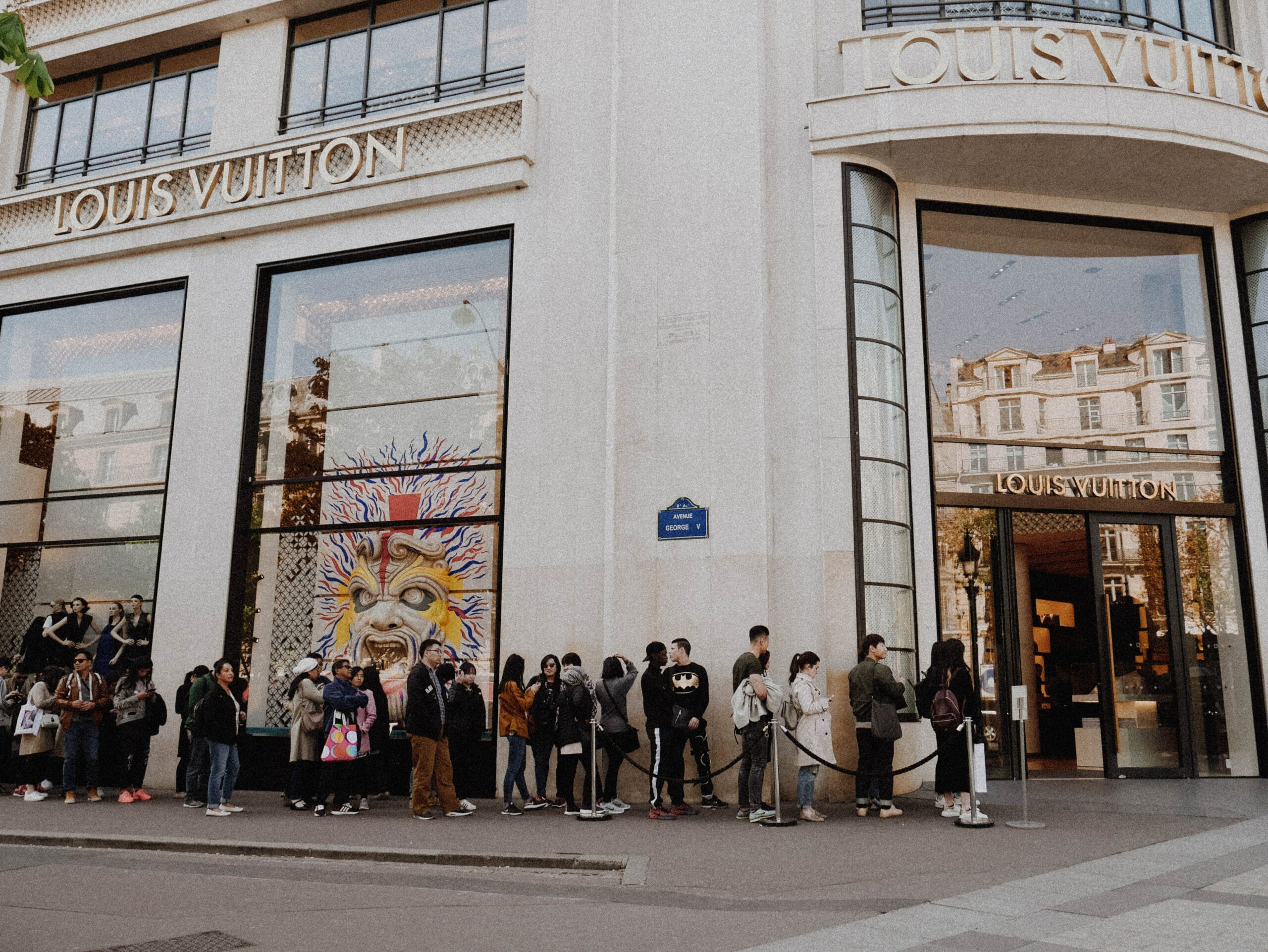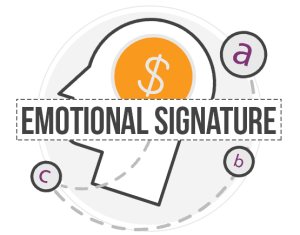We do a lot of waiting in our lives. We wait to get on a plane, for our drink at a coffee shop, and on the phone to talk to “the next available representative.” Sometimes we don’t mind waiting at all; sometimes we mind very much.
Your customers likely wait in your experience, too, and that may or may not be creating negative feelings about your experience. Therefore, managing customers’ perceptions about wait times in your Customer Experience is essential—and a practical way to foster customer-driven growth.
 I was in a Starbucks recently. I ordered my usual thing, and then, while I was waiting for it, I discovered they had a crossword puzzle. I hardly noticed the wait because I was so busy with the crossword.
I was in a Starbucks recently. I ordered my usual thing, and then, while I was waiting for it, I discovered they had a crossword puzzle. I hardly noticed the wait because I was so busy with the crossword.
My experience in Starbucks reminded me of a paper I read years ago by David Maister called, “The Psychology of Waiting Lines.” To summarize, Maister said that sometimes waiting in lines can seem longer, especially when there isn’t a fun activity like a crossword to do while you hang about.
We discussed the psychology of waiting on a recent podcast. Gretchen Rubin, the author of The Happiness Project, came up with eight reasons that waits seem longer. We borrowed these from her and addressed how you can overcome them in your own experience.
Unoccupied time feels longer than occupied time. We hate being alone with our thoughts. Our need for distraction while waiting explains why the moment you find yourself in lag time, your fingers start twitching for your phone. Distractions are a great way to mitigate the effects of waiting. They make time go faster. It’s why airport lounges have TVs, and elevators have mirrors (because we like looking at ourselves!). Moreover, we need to be distracted.
Therefore if your customers have to wait, give them something to do, e.g., free WI-FI, or amusing posters, or brain teasers and puzzles. Enable people to occupy their time.
 People want to get started. When you sit down at a restaurant, what happens? The host or waiter gives you menus and takes a drink order. They do this to start the experience, so even though you are waiting to eat, you feel like you got the process going.
People want to get started. When you sit down at a restaurant, what happens? The host or waiter gives you menus and takes a drink order. They do this to start the experience, so even though you are waiting to eat, you feel like you got the process going.
This type of kickoff is indicative of what I describe as a bitty process, meaning a lot of little parts make up the whole. You can adjust the “bitty-ness” of your process. Disney does this in the lines at their parks; they break them up into smaller parts, making them like individual experiences.
As somebody who manages the Customer Experience, you should think about the customer journey and where you make them wait. Are there ways you can help the process feel like it started? Can you break it up into smaller parts to help ease the drawbacks of waiting for customers?
Uncertain waits are longer than known, finite waits. Feeling uncertain makes waiting worse. In our business growth consultancy, we worked with the largest insurance companies in the UK back in the day. We discovered that when customers ordered an insurance policy, the insurance agent would say, “your documentation should be with you within five working days.”
It turns out the vast majority of people would call back within three days to ask about the documents after this interaction. The word “should” subconsciously put an element of doubt in people’s minds. We had the agents change to, “your documentation will be with you within five working days,” and the call volumes dropped down to only six percent after three weeks of our implementation. The lesson here is that if your customers are waiting for something, then ensure that you are communicating certainty for when they will receive it.
Anxiety makes waits seem longer. When you are nervous, waiting can seem like an eternity. For example, if you are at a job interview, doesn’t the time waiting for it seem to pass slower than other times? Or when you are waiting on test results from a doctor? It feels like an eternity. It turns out this stems from a physiological response. When we are anxious, we experience a state of physical arousal (not that kind!). Your heart rate and adrenaline levels increase. When you are in this elevated state, it feels like time slows down, even though it hasn’t. It is crucial to do what you can to recognize anxiety-inducing waits and reduce them.
Unexplained waits are longer than explained waits. If your experience requires some waiting that can occur when customers are in a state of physical arousal (still not that kind!), then explain what is happening. Knowing why they are waiting will make a significant difference in your customers’ anxiety levels.
When McDonald’s installed the order screens at the Drive-Thru window ordering station, it accomplished two things. First, there were fewer mistakes, which is perhaps not that surprising. Second, it increased the perceptions of the friendliness of the worker taking the order, which was unexpected.

However, when you are waiting, and you don’t have any information, you tend to assign malicious intent to that, e.g., that employee is ignoring me. When you can see that they are not responding because they’re busy entering your order, you perceive everything as better, and it feels like it’s taking less time, the employee is more helpful, and everything is better. The critical part here is the communication has got to be consistent.
Unfair waits are longer than equitable waits. Before I explain this one, let me give you an example compliments of my favorite industry, cable providers. I was changing the cable provider and learned I had to return the cable box. When I did, I had to wait outside in the parking lot behind 20 other people. Now, this was in Florida…in the middle of July. I felt they were honestly trying to give me the worst experience possible on the way out. I’m sure that’s not the case, but it felt like it as I was sweating profusely in the humidity. Florida is not a “dry heat.”
It felt unfair to me, so the wait was not only miserably sticky and hot but also interminable. These negative emotions bleed over into how I perceived time. And if you’re upset and angry, time seems to slow down and makes everything worse.
The more valuable the service, the longer the customer will wait. If you provide a useful product or service, customers are more willing to wait and won’t complain. Why? They see the value in it. Waiting is another form of cost for the customer. Sometimes, your value proposition is such that they are willing to wait because it’s worth it.
Waiting is another form of cost for the customer. Sometimes, your value proposition is such that they are willing to wait because it’s worth it.
Solo waits feel longer than group waits. So, if you are by yourself, waiting feels a lot longer. When you’re with people, it’s easier to occupy your time with conversation as a diversion.
However, there may also be social components to it, on top of just a way of occupying your time. My wife, Lorraine, will chat with anybody. I often see her talking with someone, and afterward, I ask her if she knows them. She tells me, “No, we just started having a chat.” (I don’t know what it says about me that she will talk to strangers but won’t talk to me while we wait.)
The essential takeaway you should get from all this is to examine your customer journey, determine the points where your customers wait and think about these eight reasons waits seem longer. Then, look for ways you can reduce the wait or the perception of the long wait.
- If the customers don’t have anything to do, is there some activity you can provide or facilitate?
- If the customers don’t see immediately what the hold-up is, can you communicate it?
- If the wait seems unfair, is there a way to balance the scales?
And so on.
You also have to train your people to manage customer wait time. They also need training on how to evoke specific emotions. Studies show that when you can evoke the proper emotions, it creates positive memories. We often say that people do not choose to come back to you based on the experience you provided; they return to you based on the memory of the experience you provided. Our Memory Maker Training explores ways to do things, like manage wait times and evoke positive emotions that people will remember well, that can facilitate a better memory of your experience.
One significant takeaway that underlies all of these is it may not be that shortening the wait time would be as effective as mitigating how the wait feels by implementing some of the other strategies. People as a whole are pretty bad at marking the passage of time. We’re insensitive to actual time differences most of the time. What we are sensitive to are perceived time differences. In other words, how long does this feel like it’s taking?
 So, rather than squeezing your phone bank employees to make sure that they get off the phone with customers as quickly as possible, you might improve the Customer Experience by keeping them on the phone longer, provided that means you are also explaining the reason for the wait or reducing the anxiety of waiting better than you are now.
So, rather than squeezing your phone bank employees to make sure that they get off the phone with customers as quickly as possible, you might improve the Customer Experience by keeping them on the phone longer, provided that means you are also explaining the reason for the wait or reducing the anxiety of waiting better than you are now.
It is crucial to see the waiting time through your customers’ eyes. Understanding how it feels and demonstrating empathy for their situation will go a long way to provide a better waiting experience.
To hear more about this idea in more detail, listen to the complete podcast here.

What customers say they want and what they really want are often different things. It is vital to know what drives value for your organization. Our Emotional Signature research can tell you where you are compared to other organizations and what to focus on to drive value for your customers. To learn more, please click here.
Colin Shaw is the founder and CEO of Beyond Philosophy, one of the world’s leading Customer experience consultancy & training organizations. Colin is an international author of six bestselling books and an engaging keynote speaker.
Follow Colin Shaw on Twitter @ColinShaw_CX
Sources:
Maister, David. “The Psychology of Waiting Lines.” Davidmaister.com. 1985. Web. 13 April 2020. https://davidmaister.com/articles/the-psychology-of-waiting-lines/.
Rubin, Gretchen. “The Psychology of Waiting: 8 Factors that Make the Wait Seem Longer.” Psychcentral.com. 8 July 2018. Web. 13 April 2020. https://psychcentral.com/blog/the-psychology-of-waiting-in-lines-8-reasons-that-the-wait-seems-long/.


